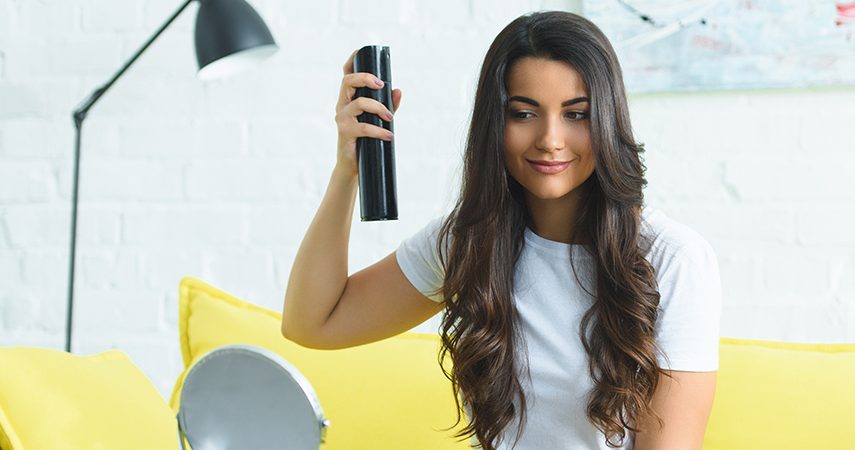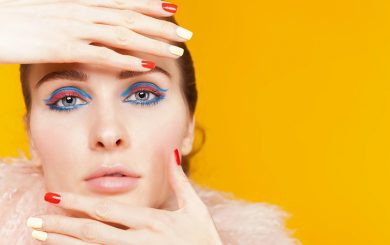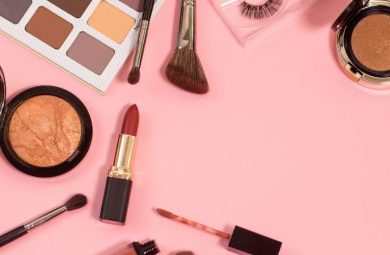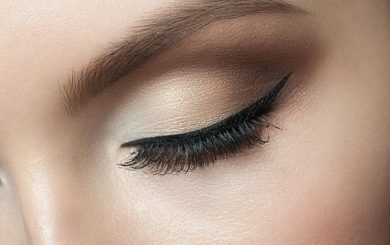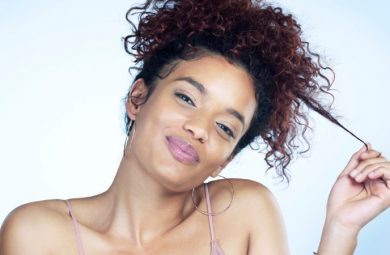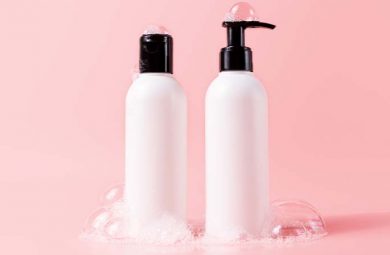Dry shampoo is a lifesaver when those busy days come. When you don’t have time to wash your hair but have to look presentable, spraying it on your roots saves you from feeling inadequate in social situations or judged by an elderly lady in the post office. Having a spray can of good dry shampoo lying around is excellent for emergencies, but what happens when you run out?
Luckily, there are many DIY dry shampoo recipes out there that can help in these dire situations. But, before we jump into the methods, let’s break the product down, see what it is, how it’s used, and why it is seriously one of the best inventions of the beauty industry.
What is Dry Shampoo?
In simple terms, dry shampoo is just a powder or a spray, alcohol-based or starch-based most of the time. These sprays (and powders) soak up the excess oils from your hair and “clean” it while doing that. Dry shampoo makes your hair look clean and presentable, but it has another benefit. It also volumizes the hair, which is why it is often used as a hair styling product as well.
Nowadays, dry shampoos come in many forms, but the most popular one is powder in an aerosol spray can. However, dry shampoo mousse is becoming more and more used, as well as dry shampoos in a paste form. They can also come in a variety of colors so you can match them to your scalp. What it is meant to do is soak up the oils, make the hair look vibrant, and smell fresh all day.
However, be careful not to overuse it. Dermatologists agree that building up dry shampoo on your scalp every day can do more harm than good since the powder can clog the pores on your scalp and cause irritation and even more sebum production. So, while it is useful, don’t go overboard. Use it one day and then wash your hair.
DIY Dry Shampoo Recipes
The Cocoa Powder Dry Shampoo
Ingredients:
- 1:1 measure of cornstarch or arrowroot powder and cocoa powder (e.g., 2 tablespoons cornstarch + 2 tablespoons cocoa powder)
- A few drops of essential oil – optional
Combine the two powders and optionally add several drops of the essential oil of choice, if you want to have a specific scent to your concoction. Use a fluffy makeup brush to apply it to the roots of your hair. You can skip the brush too, but it is so much easier to apply if you use it and requires less combing.
If you have blonde hair, you can skip the cocoa powder and just go with plain cornstarch or arrowroot powder to avoid dark spots.
The Baking Soda Option
Ingredients:
- ¼ cup cornstarch or arrowroot powder
- Two tablespoons of baking soda
- Essential oil (optional)
- Cocoa powder (for dark hair – optional)
- Tablespoon of cinnamon (for red hair – optional)
Combine all the ingredients and use a whisk to mix well, especially if using cocoa powder or cinnamon for a pop of color. Just like before, apply with a makeup brush, let sit for a couple of minutes and brush out. You can store the mixture in a glass container with a tight lid.
Related Search Topics (Ads)
Related Products
The Oatmeal DIY Dry Shampoo
Ingredients:
- Blended Oatmeal
- Coloring ingredient of choice – we’ll talk more about this in the next section
- Essential oil (optional)
Combine equal parts of blended oatmeal and coloring ingredient (or skip it altogether) and mix well with a whisk. Use a makeup brush to apply and brush out. Store it in a tight-lid container.
DIY Dry Shampoo Ingredients for Colored Hair and Added Benefits
All DIY dry shampoo recipes require a base, usually cornstarch, arrowroot powder, or blended oatmeal. All of them work well on their own, but if you want to match the color of your dry shampoo with your hair color to avoid white streaks, you can add additional ingredients that will color the mixture.
For black hair, use charcoal. If you can’t find it, you can add activated charcoal that can be purchased in any drugstore for a low price.
For brown hair, use cocoa powder. Not only will it color the mixture to match your hair color, but it will also smell divine.
Redheads can use powdered cinnamon to dye their dry shampoo and still keep their vibrant locks.
Blondes can get away with anything, so no need to add an extra ingredient.
And girls and boys with colorful hair, pink, green, blue, purple, or another crazy color can use good old sidewalk chalk kids use to create intricate drawings! Bet you didn’t think you’d use those after the age of 10!
If you want to protect your hair from the sun, add a bit of rice flour to your mixture. To combat dandruff, sprinkle in a bit of coffee for dark hair, or fenugreek for light hair colors. People with super oily hair can benefit from calcium bentonite clay or activated charcoal in their DIY dry shampoo.
Finally, if you want your shampoo to smell nice, you can add a few drops of essential oil. Some of the best choices are eucalyptus, lavender, peppermint, or lemongrass, but you can choose the one you like the most – it really doesn’t matter, as long as it smells pleasant to you!
Dry Shampoo Alternatives
Dry shampoo is fantastic, but some people prefer not to use it. So, what can be an alternative to dry shampoo?
Baby Powder
Baby powder is the OG dry shampoo our moms used. Blondes and anyone who doesn’t mind a little bit of brushing and shaking can use good old talc to manage oil on their roots. Just use a fluffy makeup brush to apply it and avoid applying too much!
Vinegar
Apple cider vinegar is an excellent option for refreshing the hair between washes. You can spray it in the air and walk through the mist, or go heavier if your hair needs a bit more love that day. The scent of vinegar should disappear after a few minutes, but if you still feel it, add a few drops of essential oil to it to make it smell better.
Salt Spray
Salt sprays are fantastic for achieving those effortless beachy waves, but they can also be used to soak up oil between washes. Spray it on your roots and rub it in with the fingertips, et voila – you get volume and get rid of the oil!

